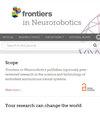快速解决不确定性:将自适应驾驶行为建模为主动推理
IF 2.8
4区 计算机科学
Q3 COMPUTER SCIENCE, ARTIFICIAL INTELLIGENCE
引用次数: 0
摘要
了解人类的适应性驾驶行为,特别是驾驶员如何管理不确定性,对于开发可用于自动驾驶汽车评估和开发的模拟人类驾驶员模型至关重要。然而,现有的适应性驾驶行为交通心理学模型要么缺乏计算的严密性,要么只针对特定场景和/或行为现象。虽然在机器学习和机器人学领域开发的模型可以有效地从数据中学习适应性驾驶行为,但由于其黑箱性质,这些模型几乎无法解释适应性行为的内在机制。因此,可通用、可解释的人类自适应驾驶行为计算模型仍然十分罕见。本文基于主动推理(一种源自计算神经科学的行为建模框架)提出了这样一种模型。该模型提供了一个原则性的解决方案,说明人类如何通过基于最小化预期自由能这一单一任务的策略选择,来权衡进步与谨慎。这将寻求目标和寻求信息(解决不确定性)的行为置于一个单一的目标函数之下,使模型能够无缝地解决不确定性,从而实现其目标。我们将该模型应用于需要管理不确定性的两个看似不同的驾驶场景中,即(1)驶过一个遮挡物体和(2)在驾驶和次要任务之间共享视觉时间,并展示了类似人类的自适应驾驶行为是如何从预期自由能最小化的单一原则中产生的。本文章由计算机程序翻译,如有差异,请以英文原文为准。
Resolving uncertainty on the fly: modeling adaptive driving behavior as active inference
Understanding adaptive human driving behavior, in particular how drivers manage uncertainty, is of key importance for developing simulated human driver models that can be used in the evaluation and development of autonomous vehicles. However, existing traffic psychology models of adaptive driving behavior either lack computational rigor or only address specific scenarios and/or behavioral phenomena. While models developed in the fields of machine learning and robotics can effectively learn adaptive driving behavior from data, due to their black box nature, they offer little or no explanation of the mechanisms underlying the adaptive behavior. Thus, generalizable, interpretable, computational models of adaptive human driving behavior are still rare. This paper proposes such a model based on active inference, a behavioral modeling framework originating in computational neuroscience. The model offers a principled solution to how humans trade progress against caution through policy selection based on the single mandate to minimize expected free energy. This casts goal-seeking and information-seeking (uncertainty-resolving) behavior under a single objective function, allowing the model to seamlessly resolve uncertainty as a means to obtain its goals. We apply the model in two apparently disparate driving scenarios that require managing uncertainty, (1) driving past an occluding object and (2) visual time-sharing between driving and a secondary task, and show how human-like adaptive driving behavior emerges from the single principle of expected free energy minimization.
求助全文
通过发布文献求助,成功后即可免费获取论文全文。
去求助
来源期刊

Frontiers in Neurorobotics
COMPUTER SCIENCE, ARTIFICIAL INTELLIGENCER-ROBOTICS
CiteScore
5.20
自引率
6.50%
发文量
250
审稿时长
14 weeks
期刊介绍:
Frontiers in Neurorobotics publishes rigorously peer-reviewed research in the science and technology of embodied autonomous neural systems. Specialty Chief Editors Alois C. Knoll and Florian Röhrbein at the Technische Universität München are supported by an outstanding Editorial Board of international experts. This multidisciplinary open-access journal is at the forefront of disseminating and communicating scientific knowledge and impactful discoveries to researchers, academics and the public worldwide.
Neural systems include brain-inspired algorithms (e.g. connectionist networks), computational models of biological neural networks (e.g. artificial spiking neural nets, large-scale simulations of neural microcircuits) and actual biological systems (e.g. in vivo and in vitro neural nets). The focus of the journal is the embodiment of such neural systems in artificial software and hardware devices, machines, robots or any other form of physical actuation. This also includes prosthetic devices, brain machine interfaces, wearable systems, micro-machines, furniture, home appliances, as well as systems for managing micro and macro infrastructures. Frontiers in Neurorobotics also aims to publish radically new tools and methods to study plasticity and development of autonomous self-learning systems that are capable of acquiring knowledge in an open-ended manner. Models complemented with experimental studies revealing self-organizing principles of embodied neural systems are welcome. Our journal also publishes on the micro and macro engineering and mechatronics of robotic devices driven by neural systems, as well as studies on the impact that such systems will have on our daily life.
 求助内容:
求助内容: 应助结果提醒方式:
应助结果提醒方式:


